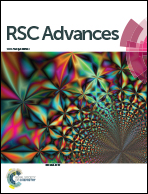Effect of air-gap length on carbon dioxide stripping performance of a surface modified polysulfone hollow fiber membrane contactor
Abstract
Surface Modifying Macromolecule (SMM) blended PSf hollow fibers were spun at different air-gaps to evaluate CO2 stripping from aqueous DEA solution and water. The fabricated membranes were firstly subjected to different characterization methods such as contact angle and liquid entry pressure measurement to evaluate the membrane's hydrophobicity and wetting resistance, respectively. To determine pore size and effective porosity of the membranes, a pure helium permeation test was performed. Morphological study of the membranes was conducted by scanning electron microscopy (SEM) and atomic force microscopy (AFM). A CO2 stripping test was carried out to investigate the effects of operating variables such as liquid and gas velocity, temperature and DEA concentration on the CO2 stripping flux. It was found that the increase of liquid velocity resulted in enhanced CO2 stripping flux. On the other hand, the increase in gas velocity did not exert significant influence on the stripping flux. The increase in temperature and DEA concentration both enhanced the stripping flux. Lastly, it was concluded that the hollow fibers spun in this work at a 15 cm air-gap could achieve the best stripping flux among all the membranes fabricated so far for CO2 stripping.


 Please wait while we load your content...
Please wait while we load your content...